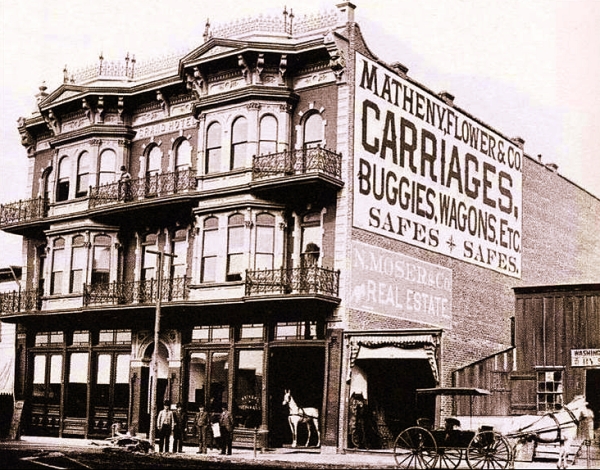The Untold Adventures of a Legendary Lawman
Wyatt Earp, a name synonymous with the wild American West, is best known for his role in the infamous Gunfight at the O.K. Corral in Tombstone, Arizona. However, Earp’s adventurous spirit did not end there. His life took many twists and turns, one of which led him to the sunny shores of San Diego, California. This period in Earp’s life is lesser-known but equally intriguing, filled with enterprise, ambition, and the pursuit of fortune.
Arrival in San Diego

In the late 1880s, Wyatt Earp and his common-law wife, Josephine Marcus, made their way to San Diego. The city was experiencing a real estate boom known as the “Great Boom” of the 1880s, which drew many fortune seekers to its burgeoning streets. Earp, ever the opportunist, saw potential in the thriving town and decided to settle there around 1887.
Business Ventures


Earp quickly immersed himself in the business world of San Diego. He acquired several properties and invested in various ventures, most notably in the entertainment and gambling industries. He became part-owner of three saloons: the Oyster Bar, the Original Saratoga, and the Boston Saloon. These establishments were not just places to drink and gamble; they were social hubs where deals were made, and fortunes changed hands. The area was called Stigaree District know for-mostly sailors-where “stung” for every last dime they had by gamblers, prostitutes and hustlers.

One of Earp’s most profitable ventures was the gambling hall he operated at the corner of Fourth and E Streets. Known for its lavish decor and high-stakes games, it attracted a diverse clientele, from local businessmen to visiting dignitaries. Earp’s charismatic presence and reputation as a lawman added an air of respectability and intrigue to the establishment.
Horse Racing and Sports


In addition to his saloons, Earp also invested in sports entertainment, particularly horse racing. He built a racetrack in National City, just south of San Diego, where he organized and promoted races. Horse racing was a popular pastime, and Earp’s involvement brought significant attention and investment to the sport in the region.
Earp’s interest in sports extended to boxing as well. He became a boxing referee and was known for his fair and firm handling of matches. His reputation for integrity followed him into the ring, and his presence at boxing events drew large crowds.
Legal Troubles and Challenges
Despite his business acumen and success, Earp’s time in San Diego was not without challenges. The economic downturn of the early 1890s, known as the Panic of 1893, severely impacted the real estate market and many of Earp’s investments. The once-thriving boomtown faced financial hardships, and Earp, like many others, saw his fortunes decline.
Additionally, Earp’s saloons and gambling halls occasionally drew the ire of local law enforcement and temperance advocates. While he had left his official lawman days behind, he still found himself navigating legal and social obstacles in his entrepreneurial pursuits.
Legacy in San Diego
Wyatt Earp’s legacy in San Diego is a testament to his adaptability and relentless pursuit of opportunity. Although his time in the city was relatively short-lived, it marked a significant chapter in his life. Earp’s ventures contributed to the social and economic fabric of San Diego during a pivotal period in its development.
Today, Earp’s presence in San Diego is commemorated with historical markers and the preservation of some of the locations he frequented. His multifaceted life, from lawman to entrepreneur, continues to captivate historians and enthusiasts of the American West.
Wyatt Earp’s journey to San Diego showcases a side of the legendary figure that goes beyond gunfights and law enforcement. It highlights his entrepreneurial spirit, his ability to seize opportunities, and his enduring impact on the places he touched. Earp’s time in San Diego may be a lesser-known chapter, but it is a vital part of the tapestry that makes up the life of one of America’s most iconic figures.

